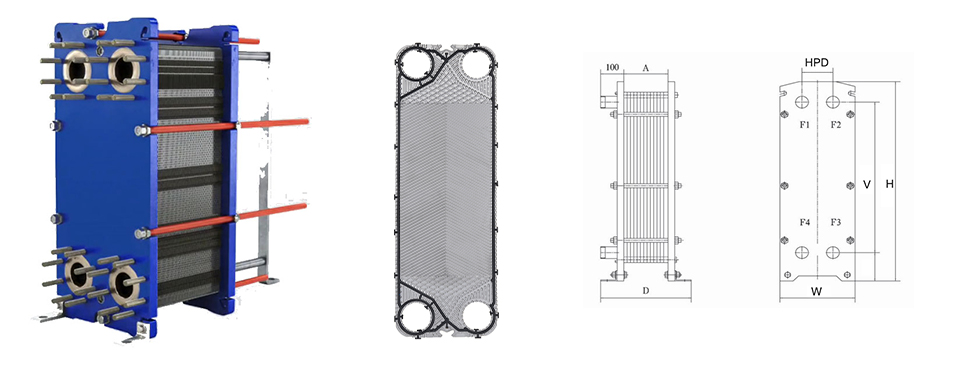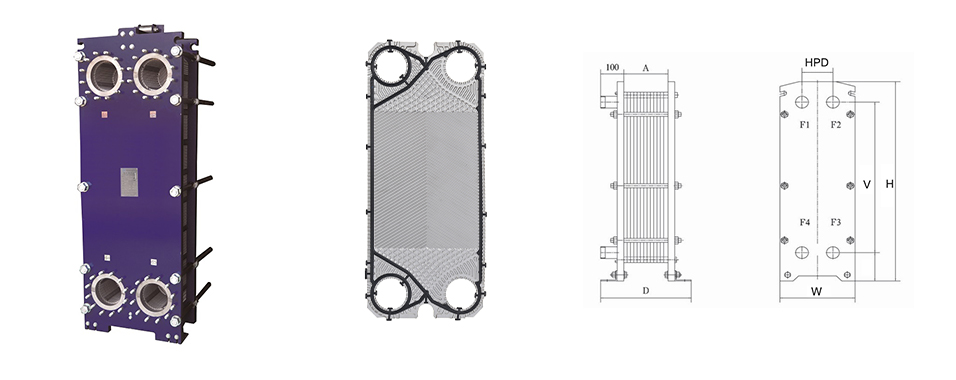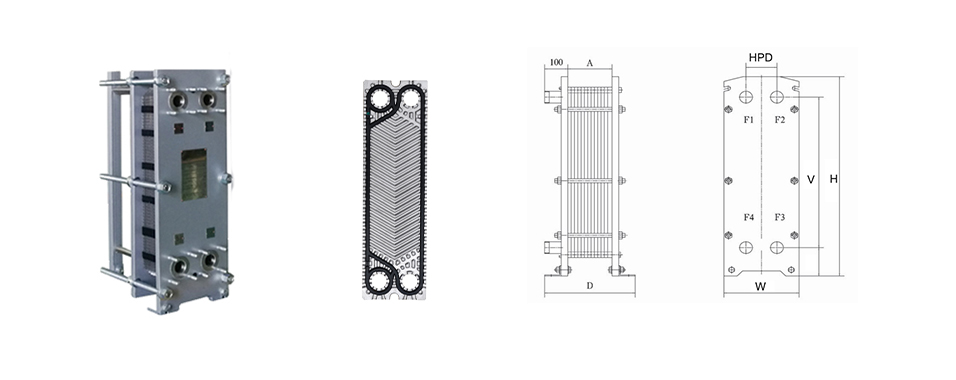Electrochemical anticorrosion maintenance of plate heat exchanger
How should the plate heat exchanger be maintained and anti-corrosion in the application?
Knowing the causes of various corrosion of heat exchangers, and choosing anti-corrosion measures reasonably, can we achieve the purpose of efficient use of equipment. In view of the relevant corrosion situation, the following anti-corrosion methods are proposed: Here we mainly introduce corrosion inhibitors and electrochemical protection.
1. Corrosion inhibitor
Corrosion inhibitors with chromate as the main component are commonly used in cooling water systems. Chromate ion is an anode (process) inhibitor. When it is combined with a suitable cathode inhibitor, it can be satisfactorily and economically The anti-corrosion effect.
Chromate-zinc-polyphosphate: Polyphosphate is used because it has the function of cleaning the metal surface and has corrosion inhibition ability. Polyphosphate can be partially converted into orthophosphate, and they can also generate large amounts of calcium. The colloidal cations inhibit the cathodic process.
Chromate-zinc-phosphonate: This method uses sodium phosphonate instead of polyphosphate. Similar to the previous method, carbamate phosphate can also be used for a higher pH value than that specified for polyphosphate. High occasions. Amino methylene phosphonate can prevent scale and control the precipitation of calcium salt even with a pH of 9.
Chromate-zinc-hydrolyzed polyacrylamide: due to the dispersing effect of the cationic copolymer hydrolyzed polyacrylamide, it can prevent or inhibit the generation of scale into dirt.
2. Electrochemical protection
Use cathodic protection and anode protection. Cathodic protection uses an external DC power supply to turn the metal surface into a cathode to achieve protection. This method consumes a lot of power and is expensive. Anode protection is to connect the protected heat exchanger to the anode of an external power supply, so that a passivation film is formed on the metal surface to be protected.
The above content is the electrochemical protection method of the plate heat exchanger, and it is of great help to the maintenance and corrosion protection of the plate heat exchanger through understanding.
Knowing the causes of various corrosion of heat exchangers, and choosing anti-corrosion measures reasonably, can we achieve the purpose of efficient use of equipment. In view of the relevant corrosion situation, the following anti-corrosion methods are proposed: Here we mainly introduce corrosion inhibitors and electrochemical protection.
1. Corrosion inhibitor
Corrosion inhibitors with chromate as the main component are commonly used in cooling water systems. Chromate ion is an anode (process) inhibitor. When it is combined with a suitable cathode inhibitor, it can be satisfactorily and economically The anti-corrosion effect.
Chromate-zinc-polyphosphate: Polyphosphate is used because it has the function of cleaning the metal surface and has corrosion inhibition ability. Polyphosphate can be partially converted into orthophosphate, and they can also generate large amounts of calcium. The colloidal cations inhibit the cathodic process.
Chromate-zinc-phosphonate: This method uses sodium phosphonate instead of polyphosphate. Similar to the previous method, carbamate phosphate can also be used for a higher pH value than that specified for polyphosphate. High occasions. Amino methylene phosphonate can prevent scale and control the precipitation of calcium salt even with a pH of 9.
Chromate-zinc-hydrolyzed polyacrylamide: due to the dispersing effect of the cationic copolymer hydrolyzed polyacrylamide, it can prevent or inhibit the generation of scale into dirt.
2. Electrochemical protection
Use cathodic protection and anode protection. Cathodic protection uses an external DC power supply to turn the metal surface into a cathode to achieve protection. This method consumes a lot of power and is expensive. Anode protection is to connect the protected heat exchanger to the anode of an external power supply, so that a passivation film is formed on the metal surface to be protected.
The above content is the electrochemical protection method of the plate heat exchanger, and it is of great help to the maintenance and corrosion protection of the plate heat exchanger through understanding.








